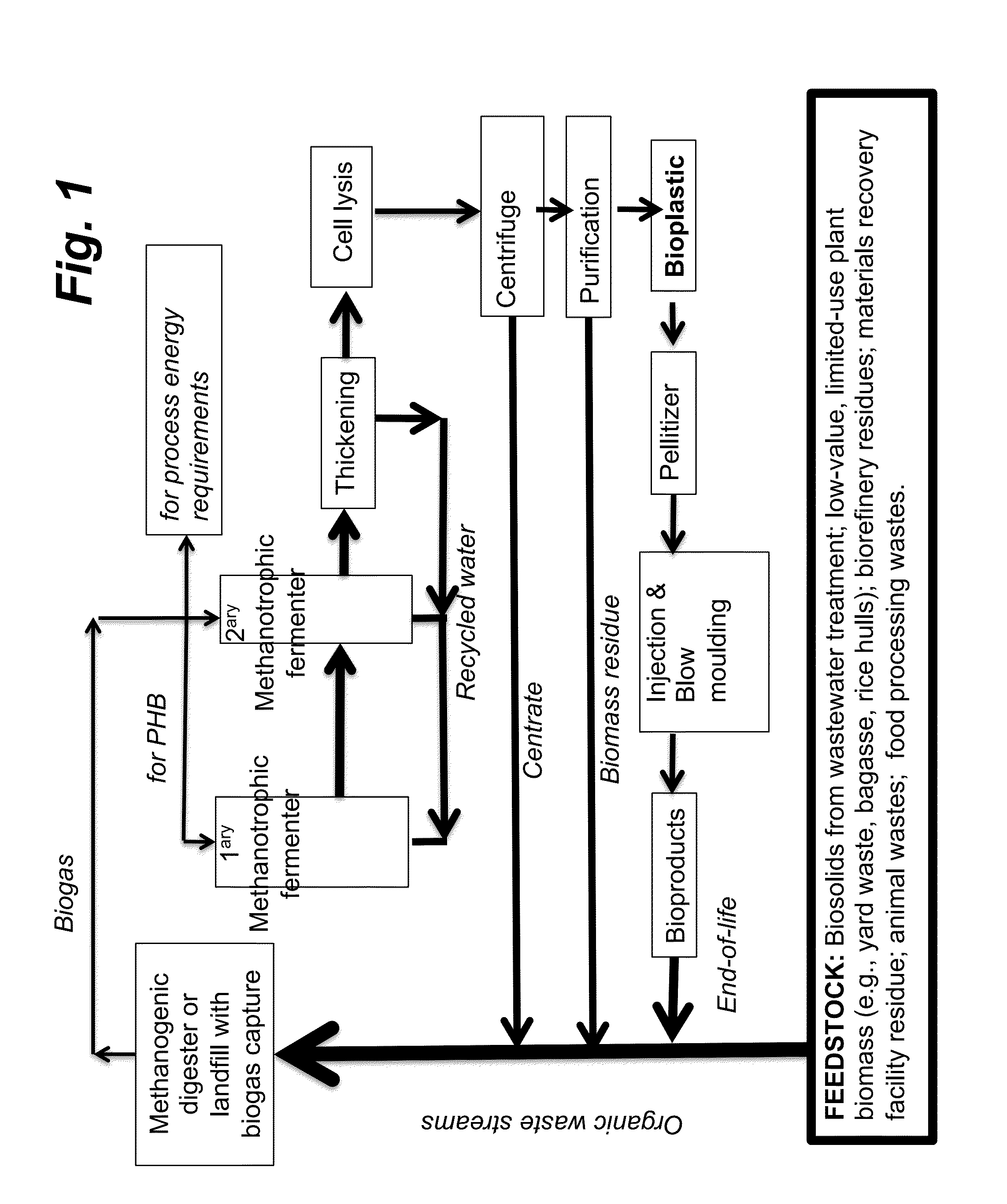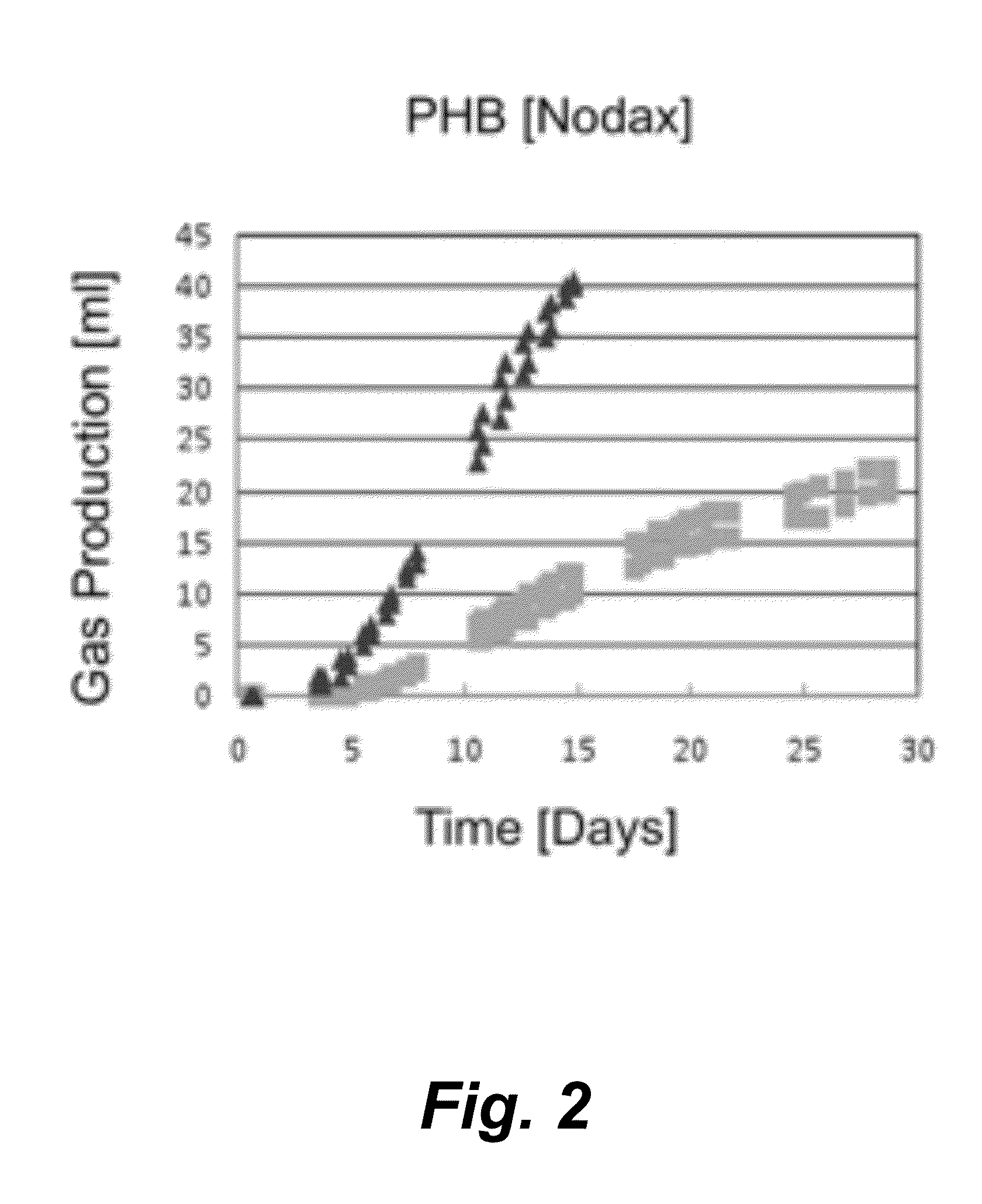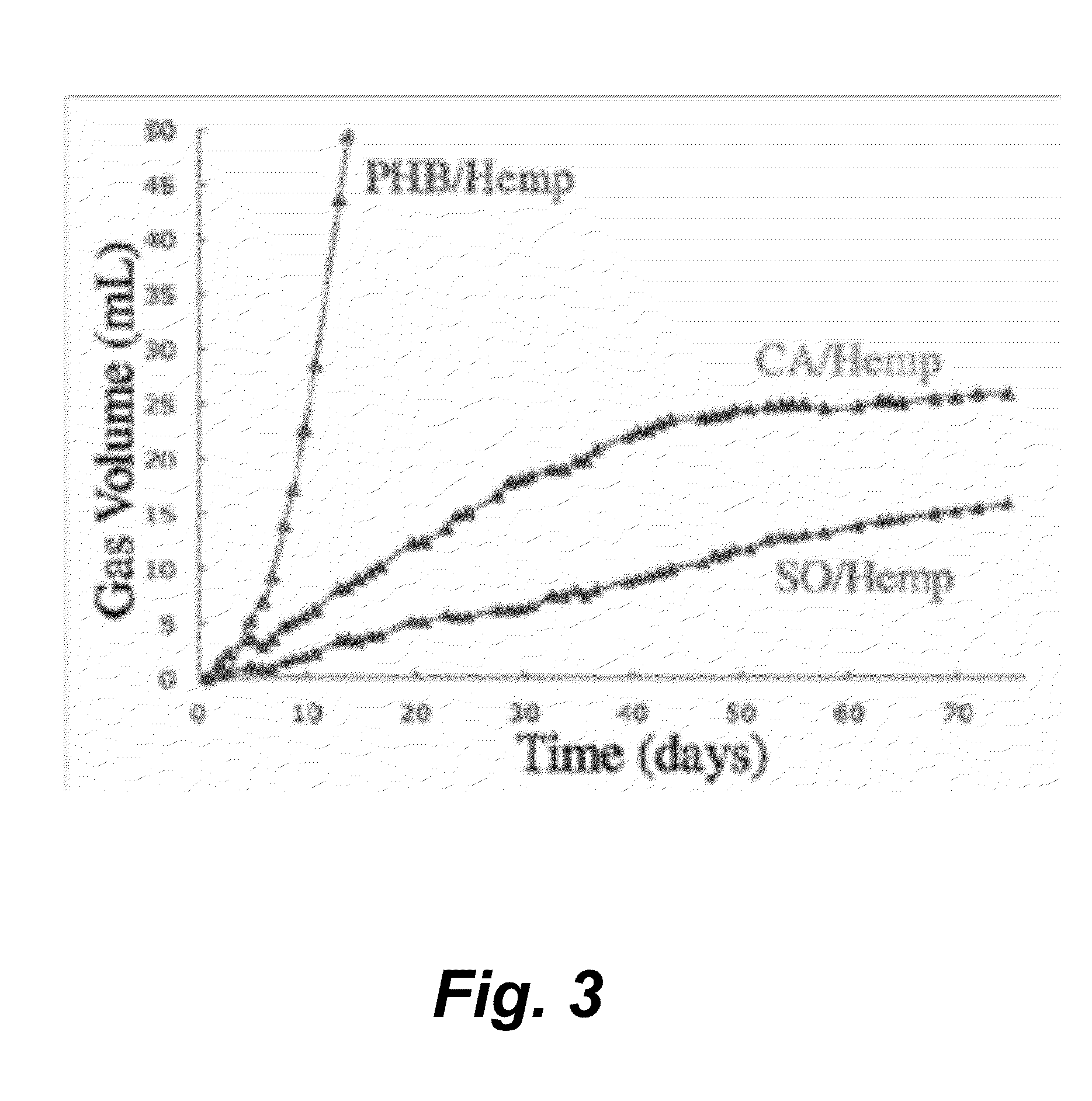Production of PHA using Biogas as Feedstock and Power Source
a biogas and power source technology, applied in the field of biogas production methods, can solve the problems of high cost of biogas collection, and inability to meet the needs of biogas collection, so as to reduce the negative environmental impact of bioplastics production, and preserve the effect of limited landfill spa
- Summary
- Abstract
- Description
- Claims
- Application Information
AI Technical Summary
Benefits of technology
Problems solved by technology
Method used
Image
Examples
example 1
Production of Biogas for the Bioplastic Resin PHB and for Biocomposites Made with Different Resins
[0019]Samples of the bioplastic PHB (Nodax brand) were incubated anaerobically in microcosms containing seed material from an anaerobic digester at a wastewater treatment plant. As shown in FIG. 2, PHB degraded rapidly at 37° C. Biocomposite specimens were then produced containing PHB, cellulose acetate or soybean oil based matrix material. As shown in FIG. 3, the PHB-based biocomposites biodegraded produced biogas at a rate 8-25 times faster than their cellulose acetate and soybean oil based counterparts.
example 2
Production of the Bioplastic PHB from “Dirty” Landfill Biogas and Anaerobic Digester Biogas
[0020]Two experiments were conducted to determine the effect of biogas on the observed rate of growth and PHB production in a type II methanotroph. In the first experiment, 9 serum bottles containing 30 mL of sterilized media were inoculated with an exponential phase culture of Methylocystus parvus OBBP. Of these bottles, 3 were inoculated with 40 mL oxygen, 40 mL methane, and 40 mL CO2, to simulate uncontaminated biogas. 3 bottles were inoculated with 40 mL oxygen and 80 mL unfiltered landfill gas collected from the Palo Alto landfill, while the remaining 3 were inoculated with 40 mL oxygen and 80 mL unfiltered anaerobic digester gas collected from the San Jose wastewater treatment plant. All nine bottles were then incubated at 30 C under constant agitation, sampled periodically, and analyzed for optical density as a means of measuring total culture density.
[0021]In the second experiment, an ...
example 3
Life Cycle Analysis of Biogas Feedstock
[0023]A life cycle analysis was performed for bioplastic PHB production from biogas methane. Twelve environmental impact categories were evaluated using the Building for Environmental and Economic Sustainability (BEES) 4.0 method developed by the National Institute of Standards and Technology. These categories are: Global Warming, Acidification, Eutrophication, Natural Resource Depletion, Indoor Air Quality, Habitat Alteration, Water Intake, Criteria Air Pollutants, Human Health, Smog, Ozone Depletion, and Ecological Toxicity. The study considered Cradle-to-resin production of PHB from waste biogas. Cradle-to-resin production was used as a boundary in order to easily compare the study with others that have evaluated plastic production. In addition, the Manufacture & Assembly stage and the Use & Service stage was omitted because PHAs can be processed with equipment already in use for traditional plastics and are functionally equivalent to existi...
PUM
| Property | Measurement | Unit |
|---|---|---|
| refractory | aaaaa | aaaaa |
| energy | aaaaa | aaaaa |
| density | aaaaa | aaaaa |
Abstract
Description
Claims
Application Information
 Login to View More
Login to View More - R&D
- Intellectual Property
- Life Sciences
- Materials
- Tech Scout
- Unparalleled Data Quality
- Higher Quality Content
- 60% Fewer Hallucinations
Browse by: Latest US Patents, China's latest patents, Technical Efficacy Thesaurus, Application Domain, Technology Topic, Popular Technical Reports.
© 2025 PatSnap. All rights reserved.Legal|Privacy policy|Modern Slavery Act Transparency Statement|Sitemap|About US| Contact US: help@patsnap.com



